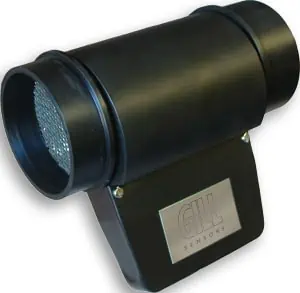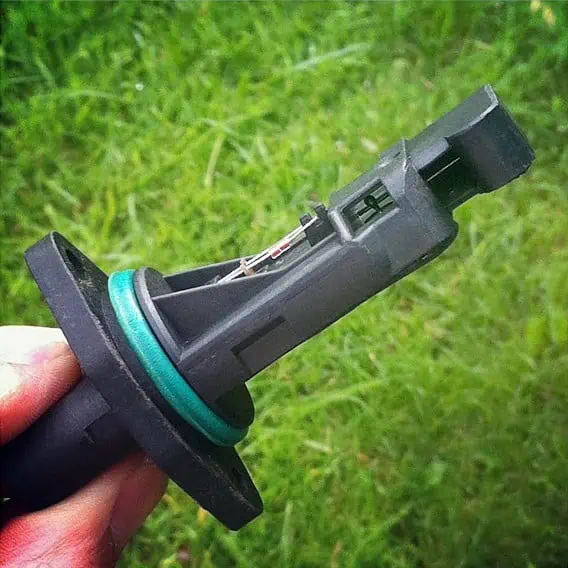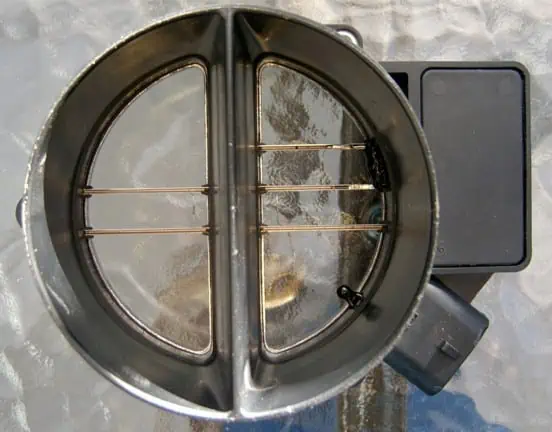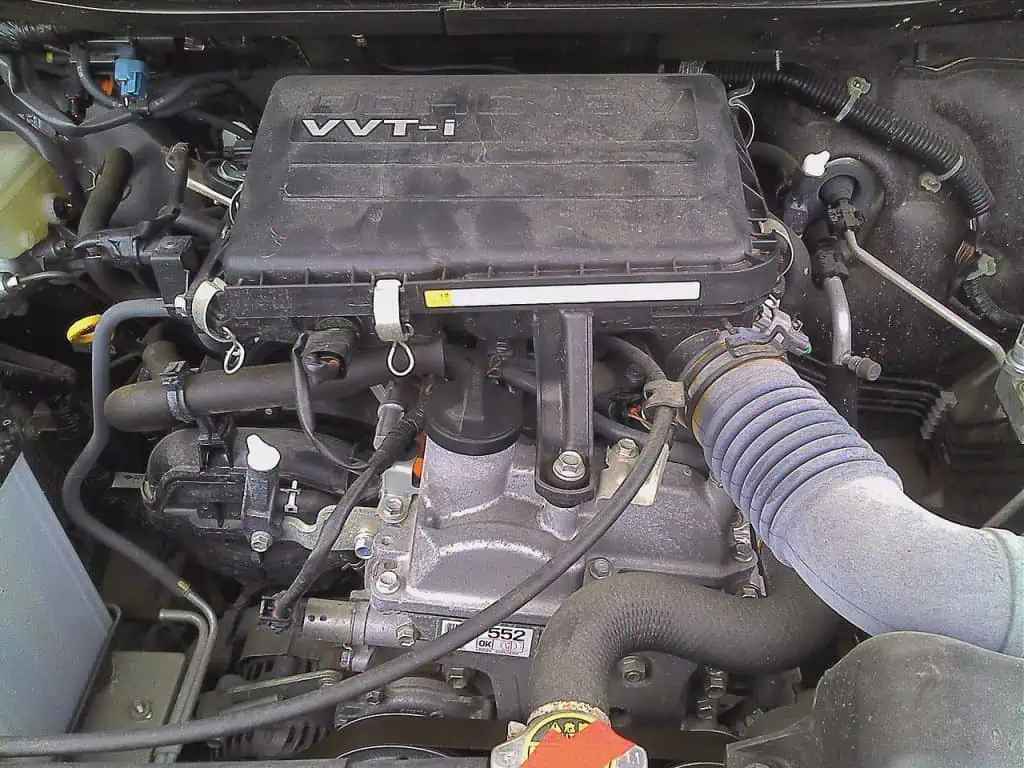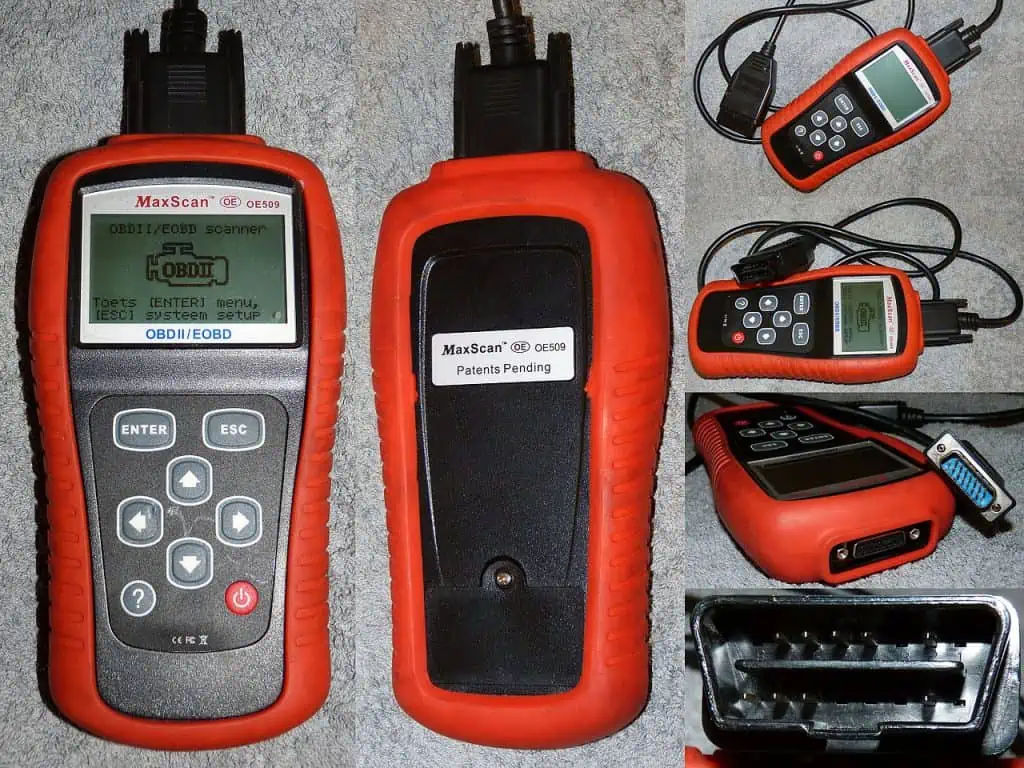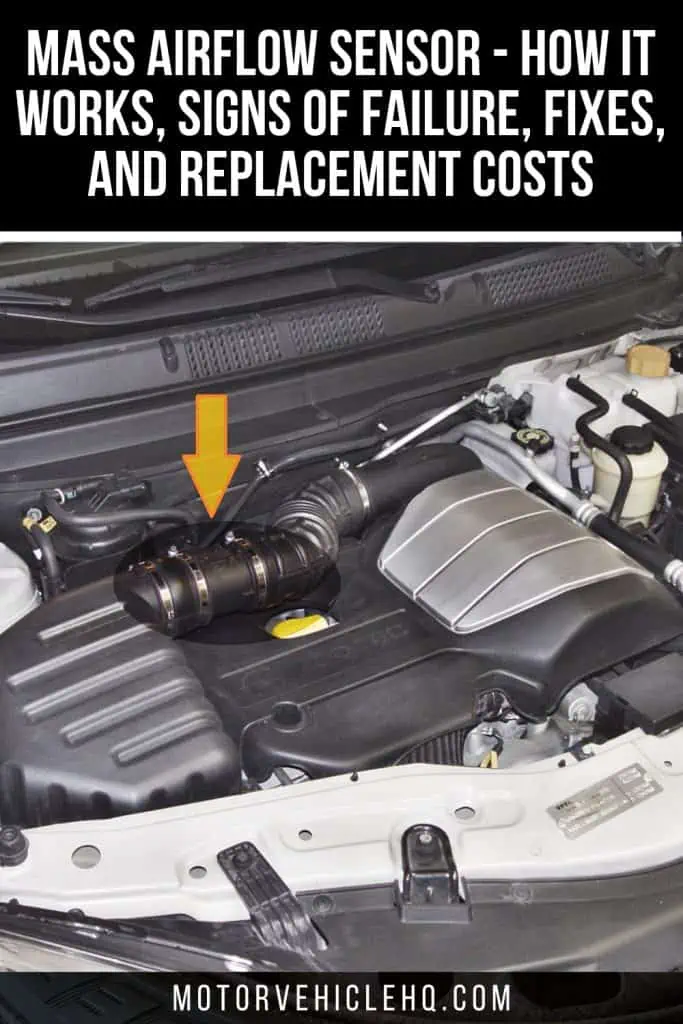Modern automobiles include a vast array of sensors and other electronic devices, in stark contrast to earlier vehicles, that actively evaluate, gauge, and aid in the optimization of important components.
For instance, how to operate the engine as efficiently as possible by realizing the ideal ratio of gasoline to air to initiate ignition. This is why we are concerned about things like the price of a mass air flow sensor.
Internal combustion engines need both fuel and air to operate, as you would have anticipated.
Your engine must carefully use as much fuel as is necessary to maintain an ideal balance between performance, fuel efficiency, and low pollutants.
A comparable Y amount of gasoline is needed to burn every X cubic feet of fresh air that enters the engine.
However, how can you determine how much air is entering the combustion chamber? To measure the airflow rate in real-time, we can thank the mass air flow sensor.
Before giving that information to the ECU, which can then accurately gauge how much fuel to inject into the engine. How then can you determine when a mass air flow sensor is failing given its significance?
A Mass Air Flow Sensor: What Is It?
It’s crucial to know more about what a mass air flow sensor accomplishes within your car before examining its price. Now tell me what a “mass air flow sensor” is and what it performs.
Its function, as we already established, is to measure the speed at which air rushes through the intakes and into the combustion chamber. It collaborates with the oxygen sensor, as well as the MAP and BARO sensors, for a more accurate picture.
Together, these sensors can provide the engine’s ECU with the most accurate air information. Specifically, the amount of air, its velocity, air pressure, air density, and atmosphere.
A MAF sensor in an automotive diesel engine by Antonín Ryska / CC BY-SA 4.0. In smaller cars, the mass air flow sensor fails (slightly) more frequently. Because of their small size, MAF sensors must be fitted in the small, confined locations of smaller engines.
The ECU will then be able to comprehend how much fuel it needs to inject into the engine. Consequently, ensuring that each combustion cycle has been as effectively tuned as it possibly could.
Keep in mind that engines have a fixed air-to-fuel ratio. ECUs follow the stoichiometric ratio of 14.7:1 for the ideal combustion (as is the case in the majority of automobiles). In other terms, there are 14.7 parts (grams) of air for every 1 part (gram) of fuel.
Let’s use a very simple illustration where the mass air flow sensor (also known as the MAF sensor) detects 29.4 grams (2 x 14.7) of air saturating the engine.
As soon as the ECU detects this, it can inject 2 grams of fuel to mix with the air and achieve the desired stoichiometric ratio.
The MAF sensor is typically hidden inside the intake manifold, next to the air filters, because it must evaluate the airflow.
It is in the most advantageous position here, right before the air enters the engine. A mass air flow sensor can be of two different types.
A Mass Air Flow Sensor: How Does It Function?
The two different kinds of mass air flow sensors are “vane” and “hot wire.” Even though they perform comparable tasks when assessing metered air, they operate in different ways:
1. Mass Air Flow Sensor of the Vane Type
It is made up of a spring holding a vane in place. The latter is coupled to a potentiometer and exposed to airflow. The vane is forced to rotate against the spring as air rushes by.
As a result of having its other end attached to a power supply unit, the potentiometer glides down a track. An associated slider movement will result in a voltage signal.
2. Mass Air Flow Sensor of the Hot Wire Type
The majority of current autos frequently contain this. It makes use of a hot electrical line that is out in the open. The wire is frequently constructed of platinum or other metals that are comparable.
The hot tip of the wire will cool as air passes it. Consequently, it requires more current to heat it and keep the temperature steady. The ECU receives a signal from that electrical current.
As you can see, neither sensor takes an exact reading of the airflow rate. Instead, choose inputs that are more reliable, quantifiable, and able to inform the ECU.
Additionally, each of them has a pulse-width modulation of between 0.0 and 5.0 volts. This voltage output, which is proportionate to the air flow rate you’re experiencing, will be sent to the ECU for accurate measurement and analysis.
Which are the Other Types of Mass Air Flow Sensors?
Technically speaking, there are three additional MAF sensor types in use. Although less noticeable than a hot wire or vane-type sensor:
1. Mass Air Flow Sensor of the Cold Wire Type
These are often seen on the LS series of engines from General Motors. They function exactly like MAF “hot wire” sensors. But “cold wire” sensors have an extra resistor that senses the surrounding air.
This “cold” resistor provides additional information to the hot wire data and provides a more precise airflow measurement. Cold wire sensors need more upkeep to function properly, though.
A mass airflow sensor by File Upload Bot (Magnus Manske) / CC BY-SA 3.0. Because of the vast amount of air, mass air flow sensors frequently fail. MAF sensors can last up to 10 years, however, they are prone to blocking after just 20,000 to 25,000 kilometers.
2. Mass Air Flow Sensor of the Kármán Vortex Type
This kind of sensor disturbs the airflow by using a perpendicular bow. Kármán vortices are produced as a result of the air oscillating around the bow.
The pulse and frequency of this oscillation, which correlates to the air velocity, can then be measured using a laser beam. This kind of sensor is typically found in Mitsubishi, Toyota, Lexus, and BMW vehicles, particularly those with turbochargers.
3. Mass Air Flow Sensor of the Membrane Type
A thin electrical membrane has been inserted into the airflow in this instance. A thinner temperature sensor film that measures continuous temperature is applied to the top and bottom surfaces of the membrane.
As the current is used to measure airflow, it operates similarly to hot wire sensors in that regard. Membrane-type sensors are currently in the experimental stage.
What Causes the Failure of the Mass Air Flow Sensor?
Mass airflow sensors undoubtedly experience a lot of wear and abuse. For every liter of fuel used during a MAF sensor’s lifetime, approximately 9,000 liters of air pass by the sensor.
Mass air flow sensors are known to malfunction because of the enormous volume of air. MAF sensors can survive up to 10 years, but after just 20,000 to 25,000 miles, they are prone to becoming blocked.
1. Buildup of Dirt
The collection of dirt and filth on the MAF sensor is the most frequent cause of a faulty sensor. To a certain extent, air filters are successful at cleaning the air.
Dirt and other airborne debris that escape from the air filter and land on the sensor while the car is operating is possible. And eventually, when enough dust builds up, the sensor begins to provide false signals.
2. The Sensor Has Too Many Miles
A wearable component is the mass air flow sensor. Your car’s engine control unit may receive increasingly erroneous information as the mileage rises.
A faulty MAF sensor should be taken into consideration when there is a pronounced performance loss and high mileage.
MAF sensors can malfunction at any time; sometimes they can last the entire life of the car, and other times they can do so even before the warranty has run out.
3. Water Stains
Water can occasionally get through the air filter when driving quickly in a downpour and harm or taint the MAF sensor, which can seriously reduce the sensor’s performance.
4. Oil Stains
In rare instances, oil vapors that flow back out of the crankcase ventilation after the engine has been turned off can also harm the MAF sensor.
5. Bad Electrical Wires or Connectors
Rarely, the fault codes or symptoms you’re observing in your car may be caused not by a malfunctioning MAF sensor but instead by frayed electrical cords or a faulty connector. This is more likely to occur in older cars or instances of rodent damage.
It’s important to note that failure of the mass air flow sensor occurs (slightly) more frequently in smaller cars. MAF sensors must be installed within the narrow, constrained spaces of smaller engines because of their compact form factor.
A hot thick film grid MAF sensor by The RedBurn / CC BY 2.0. Over time, the mass air flow sensor may degrade and become more prone to failure. This occurs as a result of the air it is frequently exposed to being polluted with dust, trash, and exhaust fumes.
The increased likelihood of debris clogging it up and its vulnerability to oil vapor flows from a positive crankcase ventilation (PCV) system is thus consistent. MAF sensors can’t survive indefinitely, though.
When you will finally need to be concerned about the cost of a mass air flow sensor is fairly obvious. When the MAF sensor fails (or is about to fail), among its symptoms are:
What are the Symptoms of a Bad Mass Air Flow Sensor?
Your mass air flow sensor may deteriorate and grow prone to failure over time. This is because it is frequently exposed to flowing air that is contaminated with dust, debris, and exhaust fumes.
If you notice any of the following performance issues with your car, it’s crucial to have a local technician take a look. Even being too dirty can cause it to stop working.
The flow sensors incorporated inside the compressor in many cars, particularly Toyotas, frequently fail. A damaged air flow sensor could display as code B1479 when scanned by an expert in car repair.
1. Check Engine Light Illuminates
The check engine light coming on is the most typical indicator of mass air flow sensor failure. If the light comes on, you should have your car checked out by your neighborhood mechanic whether or not there are any additional indications of a problem. It can indicate a mass air flow sensor that is harmed or malfunctioning.
2. Hesitation or Jerking
Mass airflow sensor issues may be indicated by unexpected hesitancy and/or rapid, anomalous jolts of power.
This might occur while you accelerate onto a freeway or go at moderate speed down a street. This is a very risky way to drive, therefore you should have a professional vehicle mechanic check it right away.
3. Misfiring or Running Rough
The powertrain control module (PCM), which controls the engine, transmission, and other components in your car, won’t be able to determine how much gasoline the engine requires if it doesn’t receive a suitable signal from the mass air flow sensor.
This may result in the engine running too lean (with insufficient fuel) or too rich (too much fuel). An incomplete combustion process as a result can cause the engine to run rough and misfire.
4. A Too Lean Air to Fuel Ratio
Running lean means your car is using too much air and too little fuel. When this occurs, the MAF sensor gives erroneous data to the PCM similar to when you are running rich. This time, underrate the airflow instead of overestimating it.
While driving lean for an extended period will temporarily enhance your fuel efficiency, it will seriously harm your car. You might experience hard starts, hard engine seizures, engine hesitancy, surging, and/or check engine light illumination.
Similar to other MAF sensor problems, the solution can be as simple as cleaning the cables. But it’s a good idea to have a mechanic look over the car for damage.
A Holden Commodore’s MAF sensor by Jeff3205. The Mass Air Flow sensor signal is fed to the engine computer, which utilizes it to calculate how much fuel has to be pumped to reach the desired air-fuel ratio. The MAF sensor signal, which is typically used to assess engine load, may interfere with the traction control system or the automatic shifting pattern in damaged vehicles.
5. Dark Smoke Emanating from Your Exhaust
If your car is emitting a lot of exhaust smoke, there may be an issue. While it may be caused by several various problems, it may indicate that your mass air flow sensor is damaged, which would lead the engine control model to calculate the fuel injection incorrectly and result in black smoke.
6. Difficulty Turning the Engine Over or Starting It
The air-fuel mixture may be out of balance if you are having difficulties starting your car or getting the engine to turn over.
All vehicles are particularly sensitive to the right air-fuel ratio, and they may struggle to start if the mass air flow sensor is malfunctioning. Take your car to an auto repair shop as soon as you can if you’re having this problem.
7. Low Fuel Efficiency
If you’ve observed that your automobile is suddenly using more fuel than usual, there may be a significant problem.
The powertrain control module (PCM) may be receiving false data from a faulty mass air flow sensor, which could result in the vehicle using gasoline much more quickly than it should.
8. A Too Rich Air to Fuel Ratio
Running rich merely indicates that there is either too much fuel or not enough air because every combustion cylinder requires the proper amount of fuel to air at all times.
This can result in rough idling, black smoke coming from your exhaust, worse fuel economy than usual, or the check engine light coming on.
The MAF sensor may be damaged or have dirty cables, which can cause these issues. Because it cannot compute airflow accurately, it delivers false information to the PCM. The PCM discharges too much gasoline when it overestimates the airflow.
Cleaning the wiring of the MAF sensor can typically fix the issue. It is advised to have it checked by your reliable mechanic if you notice the Check Engine Light on.
9. Your OBD-II Scanner Displays Code P0101
Use a code reader to find out what diagnostic fault codes the machine sends your way if the Check Engine Light is on. P0101 – Mass Air Flow Sensor Circuit Range/Performance is the entire readout for this error code.
The engine computer uses the Mass Air Flow sensor signal to determine how much fuel has to be pumped to achieve the proper air-fuel ratio.
The traction control system or the automatic shifting pattern in impacted vehicles may be interfered with by the MAF sensor signal, which is frequently used to evaluate engine load. The most typical reason for this code is a MAF sensor that is clogged, unclean, or otherwise problematic.
However, this error number may also indicate a damaged intake boot, a clogged or incorrectly placed engine air filter, vacuum leaks, a blocked catalytic converter, or restricted exhaust.
Before you can be certain that the code is caused by the defective MAF sensor, it’s worth seeing a technician to rule out all of these other possibilities because there are other possible causes besides a bad MAF sensor. Before replacing it, complete this.
A check engine light by Wikiuser100000 / CC BY-SA 3.0. The most frequent sign of a failing mass air flow sensor is the check engine light turning on. Regardless of whether there are any other signs of a problem, you should have your automobile checked out by your local mechanic if the light turns on.
How Is a Bad Mass Air Flow Sensor Diagnosed?
It’s relatively safe to continue driving for a while even if your mass air flow sensor is about to fail. However, you’ll have to put up with the previously described symptoms. In a nutshell, poor performance, jerky idling, high fuel consumption, etc.
In general, a broken MAF sensor wouldn’t immediately ruin your engine; instead, it would just compromise and make it uncomfortable to operate your car.
This should give you enough time to get it checked out at a mechanic. Nevertheless, we advocate immediate action and advise against delaying.
A bad sensor will make the engine run worse in the long term. Additionally, those symptoms would quickly speed up engine wear and tear if ignored for a long time. Later repairs will cost more as a result of this.
Diagnosing the MAF sensor is the first step in solving the problem if you notice that the engine is not running as smoothly as it once did. Before figuring out how much a mass air flow sensor costs, do the following actions to diagnose the issue:
Step 1: Use An OBD2 Scanner to Check for Error Codes
Connecting an OBD diagnostics kit is the simplest way to determine what’s wrong with your car. Your ECU is remarkably good at identifying even the smallest subtest of problems. This is beneficial because a malfunctioning MAF sensor is one of the most difficult parts to identify.
A single error code might identify the precise root cause of an underlying problem, potentially saving hours of diagnostic time. This will speed up the procedure and maybe keep you from misdiagnosing any issues with your car. Look for any P01XX error codes to rule out a bad MAF sensor.
The air flow-related sensors such as the MAF, MAP, BARO, and other similar sensors, as well as those error codes between P0100 and P0199, are of particular interest. The most frequent ones associated with a defective MAF sensor include:
- Code P0100 – Volume or Mass moving air Circuit Failure
- Code P0101 – Volume or Mass moving air Problem with Circuit Range Performance
- Code P0102 – Volume or Mass Low Input Air Flow Circuit
- Code P0103 – Volume or Mass High input airflow circuit
- Code P0104 – Volume or Mass Intermittent Circuit for Air Flow
Be aware that more sophisticated OBD scanners and readers can let you view the MAF sensor values in real-time. RPM is typically used to quantify them. More air must pass through the MAF sensors as your RPMs (engine speed) increase.
The MAF sensor ought to read 0mg when you’re idling. Then, as the RPM increases, it rises steadily and gradually. Keep in mind that the airflow value must not change. It might increase to 3 mg at 1,000 RPM, 6 mg at 2,000 RPM, 9 mg at 3,000 RPM, and so forth.
Step 2: Be Sure to Visually Inspect the MAF Sensor
You might visually examine the MAF sensor while you’re near the engine. Particularly, look at the wiring. Are the wires showing any rust or even any obvious evidence of damage? Including fraying, burns, short circuits, and other issues.
In addition, you ought to examine the sensor itself. Do you see any oily residue on it or any dirt or other debris accumulating close to the measurement elements? Additionally, given the sensitivity of the measurement components, check to see if there is any drifting or damage there as well.
A typical car engine by Yones / CC BY-SA 3.0. In the long run, a bad sensor will result in worse engine performance. Furthermore, if those symptoms were neglected for a long period, engine wear and tear would increase quickly. This will lead to more expensive future repairs.
You can bench-test your MAF sensor with a multimeter once you’ve determined that it is to blame. This should help you determine whether the voltage output from the MAF sensor is consistent with how it should operate under typical conditions.
If those voltage measurements are abnormal or you observe that it fluctuates regularly, the MAF sensor is broken. Turning off the engine, putting the transmission in “Park,” and applying the handbrake are the first steps. After completing that, you can move on by:
Step 3: Utilizing a Multimeter to Test the Mass Air Flow Sensor
- Find your car’s MAF sensor right now. It should be situated between the intake manifolds and the filter housing in the majority of vehicles. Others could discover that it is positioned just in front of the throttle body.
- If you want to know what range of voltage the MAF sensor should be operating at, you should consult a service handbook for the particular make and model of your automobile.
- Connect the black wire of the multimeter to the ground circuit and the red lead to the MAF sensor.
- You can now start the engine and let it idle.
- On most autos, the MAF sensor should read between 0.5 and 0.7 volts while the engine is idling. Once more, this will differ based on the brand, model, and features of your vehicle.
- Alternatively, you might use the screwdriver handle to lightly tap the MAF sensor. However, take care not to physically strike the exposed measuring components.
- The readings should stay constant with a short touch of the sensor when it is running at idle. Otherwise, any flux in the voltage values is a sign that the wire is broken.
- By revving the engine, you may also conduct a more thorough diagnosis. 2,500 to 3,000 RPM, let’s say. The MAF sensor will be taking in more air when the engine is running at this higher RPM.
- Look at the readings right now. It should show between 2.0 and 2.5 volts, which is significantly higher than idle (dependent on the vehicle).
- The entire sensor has failed if the voltage increases not at all.
- Try touching the measuring element with a multimeter that you already have while the ignition is off and the MAF sensor is unplugged.
- The leads should be placed against the hot wire element gently. If it displays infinite resistance (represented by the letters ‘OL’ in ohms), the hot wire is broken.
Mass Airflow Sensor Cleaning
It’s essential to have a regular cleaning program in place to maintain the MAF (mass air flow) sensor operating at peak efficiency because this filament of your car’s MAF sensor could become dusty and lead to its failure.
Utilize a CRC mass air flow sensor cleaner – a general-purpose evaporating cleaner and degreaser that is safe for use on plastic that is sensitive to electrical and electronic equipment.
It is made to efficiently remove carbon deposits, light oils, dust, lint, dirt, and other light contaminants from hard-to-reach locations.
Before reinstalling or connecting the MAF sensor, just remove the sensor, open the CRC spray head, and spray the filament until it is clean and clear of debris.
Some advice doing a thorough cleaning following each oil change. or, at the very least, annually. You can begin by
A typical onboard diagnostics (OBD) handheld scanner by Arp. Be aware that increasingly advanced OBD scanners and readers can provide you with a real-time view of the MAF sensor results. Usually, RPM is employed to quantify them. As your engine’s RPMs (revs per minute) rise, more air must pass through the MAF sensors.
- Taking the MAF sensor off its mounting and disconnecting it.
- Pick up a special MAF sensor cleaning solution and set it down on a cloth.
- Give a few sprays of this cleaning on the MAF sensor. Rubbish alcohol can be used as an alternative.
- Concentrate on the housing and connectors of the MAF sensor as you clean it.
- Just make sure the measurement elements don’t come in contact with this cleaning solution (hot wire, vane, etc.). Just in case, you can carefully tape it up to keep it from being sprayed.
- Allow the MAF sensor to dry completely and check that it has. This process should take about 20 minutes, or perhaps an hour if you’re drinking.
What Is the Cost of a Mass Air Flow Replacement?
You will need to replace the MAF sensor if your diagnosis shows that it has failed. An approximate $300 total mass air flow cost during a replacement is the industry standard.
Depending on the type of car you drive, it can differ greatly. When factoring in the labor and parts, you might be able to replace the mass air flow sensor for less than $100 in some cases. It could also increase to $500 or more.
For as little as $30, you may find a mass air flow sensor that is fully functional. Although you might have to spend more than $300 for premium OEM-spec parts. In the meanwhile, labor costs should be reasonable, falling between $50 and $80.
This is due to how easily accessible the MAF sensor is, merely requiring the removal of a few plastic clips or straightforward mounting. As a result, replacing it shouldn’t need much time.
It’s really simple to manage a DIY mass air flow sensor replacement that takes just a few minutes to do if you want to save money on labor costs:
- Always turn off the power before servicing any electrical parts, including the MAF sensor.
- Squeezing the plastic tabs keeping the MAF sensor in place will release the wires from their connection. To remove the connectors, carefully pull on them, being careful not to tear the wires.
- You can now unplug the MAF sensor. To remove any screws, clamps, or mounts holding the MAF sensor in place, you’ll need a screwdriver.
- Replicate the procedure in reverse after removing the outdated MAF sensor and inserting the new one. Just be careful not to physically touch or exert pressure on the measurement components.
- Verify again that the connectors are tightly fastened, then take your car for a brief test drive to make sure everything is operating as it should.
The Conclusion
Your car’s electronic fuel injection system includes a mass air flow sensor (MAF), which is situated between the air filter and the intake manifold. As suggested by the name, it performs the role of a sensor to determine the mass flow rate of air entering an internal combustion engine.
The amount of gasoline provided by an EFI (Electronic Fuel Injection) system is controlled by a computer (powertrain control module, or PCM), which turns the fuel injectors on and off. The machine receives information from the mass air flow sensor about how much air is being sucked into the engine through the throttle plates.
The amount of fuel required is calculated by the computer using this knowledge combined with information from additional engine sensors. When the proper air/fuel ratio is reached, the machine adjusts injector length (on time).
Mass flow sensors are preferable to volumetric flow sensors when determining the amount of intake air in each cylinder because air density changes depending on the surrounding temperature, altitude, and the usage of forced induction in automotive applications.
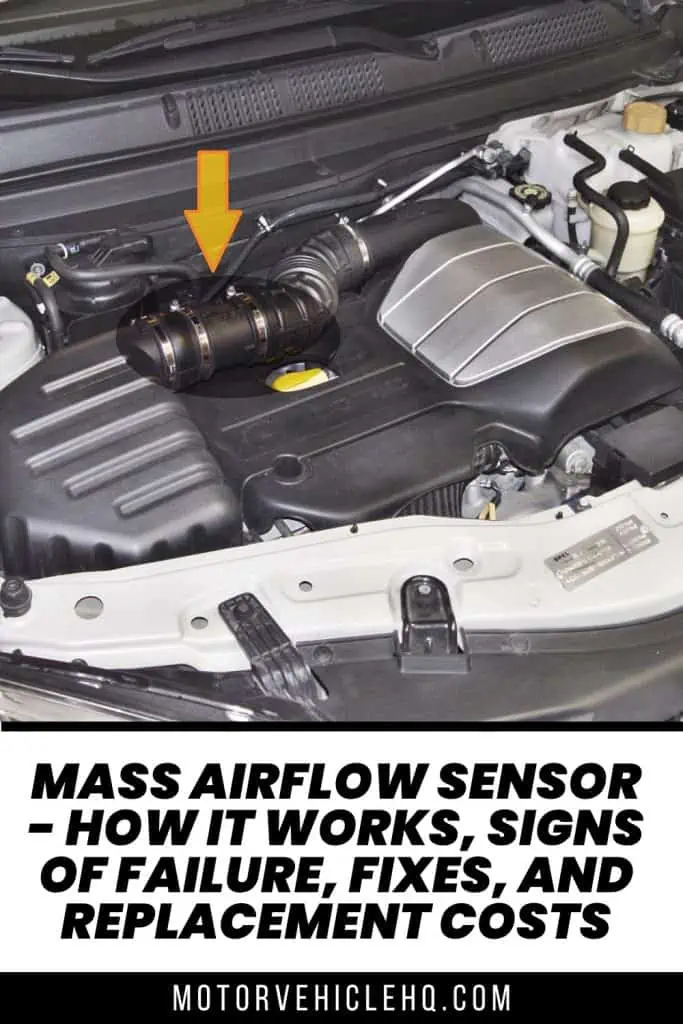
A MAF sensor in an automotive diesel engine by Antonín Ryska / CC BY-SA 4.0

Jim Wicks is the founder of MotorVehicleHQ. With over two decades of experience in the automotive industry and a degree in Automotive Technology, Jim is a certified car expert who has worked in various roles ranging from a mechanic, car dealership manager, to a racing car driver. He has owned more than 20 cars over the past 15 years. Ask him about any vehicle you see on the road and he can tell you the make, model and year. He loves the aesthetics of all things cars, and keeps his vehicles in pristine condition.
In his free time, Jim enjoys getting his hands dirty under the hood of a classic car or taking long drives along the country roads. His favorite car? A 1967 Shelby GT500, a true classic that, according to Jim, “represents the pure essence of American muscle.”

